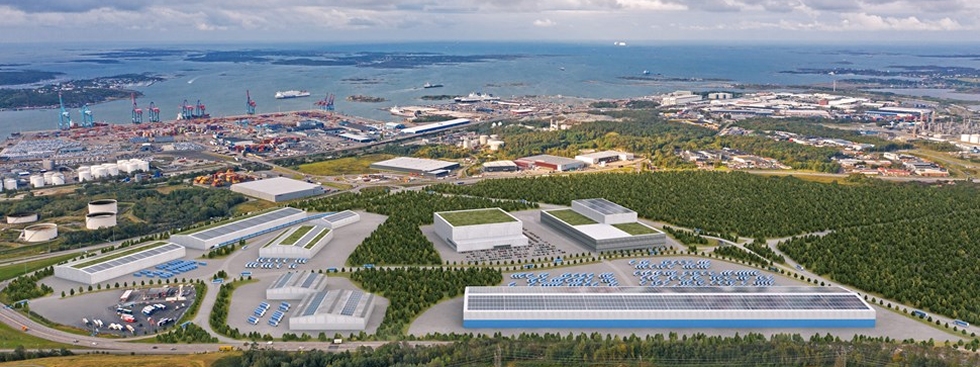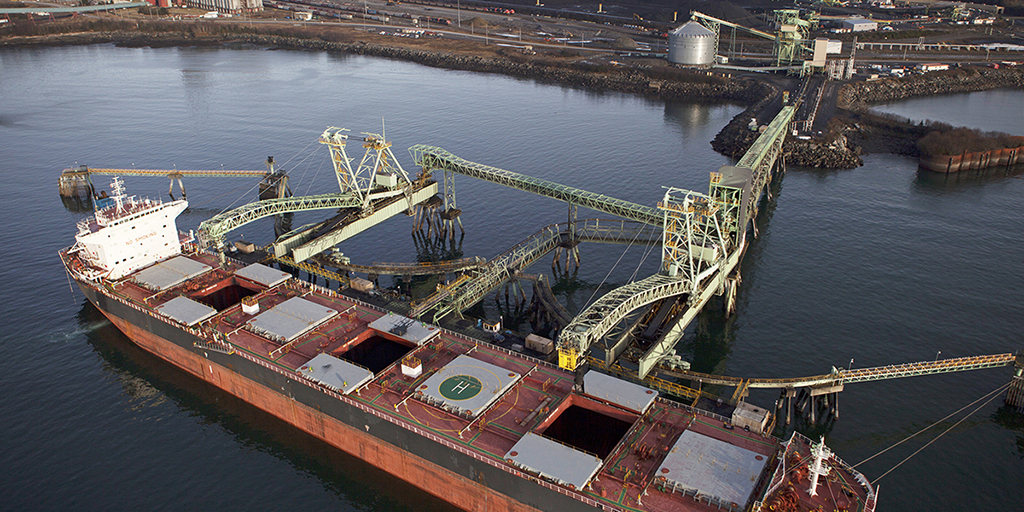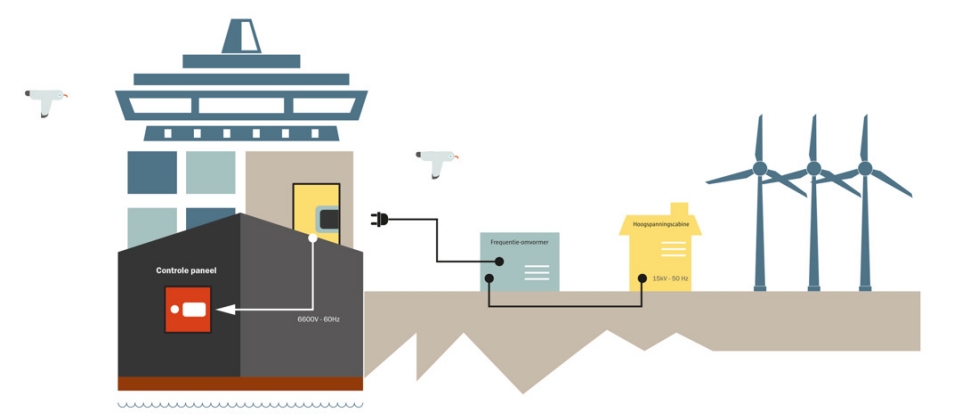Gene Seroka Honored with Lifetime Achievement Award from Inland Empire Economic Partnership
 June 16, 2021 – Recognizing decades of leadership and accomplishments in the supply chain, logistics and maritime industry, the Inland Empire Economic Partnership (IEEP) has named Port of Los Angeles Executive Director Gene Seroka as its seventh annual recipient of the Southern California Logistics Council Lifetime Achievement Award for Excellence in Supply Chain & Logistics Management. The honor was presented recently at the 2021 Southern California E-commerce and Logistics Summit. June 16, 2021 – Recognizing decades of leadership and accomplishments in the supply chain, logistics and maritime industry, the Inland Empire Economic Partnership (IEEP) has named Port of Los Angeles Executive Director Gene Seroka as its seventh annual recipient of the Southern California Logistics Council Lifetime Achievement Award for Excellence in Supply Chain & Logistics Management. The honor was presented recently at the 2021 Southern California E-commerce and Logistics Summit.
“Gene Seroka is the living definition of excellence in logistics and supply chain management,” said Paul Granillo, president and CEO of IEEP. “Because of all that Gene has achieved for our industry, he is very deserving of this award.”
The IEEP’s Lifetime Achievement Award recognizes business leaders who exemplify management excellence, exhibit high levels of integrity in moral and ethical conduct, lead beyond borders to meet the requirements of stakeholders, and ultimately serve the common good, among other criteria.
“Because the Inland Empire is such a vital part of our nation’s largest trade gateway, I’m grateful to receive this award from an organization that has done so much to address the many pressing needs of our industry and the one in nine jobs it helps facilitate here in Southern California,” said Seroka. “I look forward to continued involvement with IEEP and contributing to its important initiatives in the future.”
Seroka has served as the Executive Director of the Port of Los Angeles — the busiest container port in North America — since 2014. During his tenure, he has led the Port to record-breaking cargo volumes, including setting a new record for a Western Hemisphere port this month when Los Angeles passed the 10-million annual container volume threshold. Seroka’s focus on supply chain optimization and infrastructure digitalization are credited among the reasons for the Port’s ongoing success.
In presenting the award, IEEP also pointed to Seroka’s leadership during the COVID-19 pandemic. Appointed in March 2020 by Los Angeles Mayor Eric Garcetti as the city’s Chief Logistics Officer, Seroka spearheaded Logistics Victory Los Angeles (LoVLA), an initiative to get critical personal protective equipment and emergency supplies through the supply chain to healthcare workers and others on the pandemic frontlines.
North America’s leading seaport by container volume and cargo value, the Port of Los Angeles facilitated $259 billion in trade during 2020. San Pedro Bay port complex operations and commerce facilitate one in nine jobs across the counties of Los Angeles, Orange, Riverside, San Bernardino and Ventura. The Port of Los Angeles has remained open with all terminals operational throughout the COVID-19 pandemic.
SOURCE: Port of Los Angeles |
|
|

Port of Gothenburg Ready to Enter Joint Venture with Property Company Castellum
June 22, 2021 - The Gothenburg Port Authority has signed a letter of intent with the property company Castellum to develop the Halvorsäng area into one of the foremost logistics hubs in Sweden. A joint venture company will be established in which both parties will have equal shares.
The aim of the partnership is to facilitate planning, development, and construction at Halvorsäng, with a view to owning, managing, and leasing the completed facilities. The land area is approximately 270,000 square metres, including 155,000 square metres of building space. Construction is due to commence during 2021 and will take four years to complete.
“We have arrived at an ideal solution for all concerned, but with the land remaining at the disposal of the Gothenburg Port Authority. The plan is to share costs and risks with a partner that has the requisite knowledge and expertise in the development of logistics facilities that will benefit the port as a whole,” said Elvir Dzanic, Gothenburg Port Authority chief executive.
The project was given the go ahead by the City Executive Board last week although the setting up of a joint venture company will be subject to approval by the City Council.
“We are currently awaiting a decision from the City Council that will facilitate long-term collaboration, ultimately leading to the development of logistics facilities that will help fulfil the goals of the partners and create new job opportunities throughout the region,” said Henrik Saxborn, Castellum AB chief executive.
Castellum’s initial investment will involve acquiring a 50% interest in the land, at an estimated cost of around SEK 400-450 million, and with a further investment of SEK 550 million in development. Castellum was chosen as the port’s partner following a selection process at the end of last year. The Port Authority reviewed a number of bids in which financial and environmental considerations were key factors.
A letter of intent has been signed by both parties with the aim of putting a system in place to deal with customer enquiries and ensure construction can get under way towards the end of this year. The original timetable for the project has been adhered to, with working groups focusing on the different parts of a future shareholders’ agreement. If everything goes to plan, the project can commence in the autumn.
“Although we are still in the early stages we are firmly committed to the successful development of Halvorsäng. With direct links to the port and major highways, Halvorsäng will become an amazing focal point for the logistics of the future,” said Mariette Hilmersson, Castellum Region West chief executive.
Located directly north of the port’s terminals, immediately beside the Hisingsleden bypass, Halvorsäng is ideally situated to handle incoming freight for onward transport throughout Sweden and Scandinavia by road or rail.
SOURCE: Gothenburg Port Authority |
|

Prince Rupert Port Authority Highlights Importance of Exports to Northern BC
June 14, 2021 - The Prince Rupert Port Authority (PRPA), through a funding partnership with Northern Development Initiative Trust (NDIT), has published a Northern BC Export Profile today that illustrates the critical role that international exports play in underpinning local economies in communities from the Cariboo to the Yukon border.
The interactive web platform will broaden visibility for community, business and economic policy leaders on the diverse resource export industries that currently support the economy of Northern BC, and will be an important tool to identify new export and economic development opportunities for the region. The development of regional export strategies will be critical to continuing to grow a sustainable, competitive, and diverse Northern BC economy that maximizes the value of local resources and labour.
The profile confirmed Northern BC as a key economic driver for British Columbia, particularly with respect to export sectors like forestry, petrochemicals, mining, agriculture and fisheries. These industries, and the communities that depend on them, have been vulnerable to economic cycles. Increasing the capacity, capabilities and flexibility of supply chains, and ensuring competitive market access to a diversified international market for Northern BC products, is a fundamental approach to improving the stability of local industries and communities.
The Northern BC Export Profile was developed to ensure current export flows including volumes, values, destinations and transportation modes by region and industry of origin, were better understood by a broader array of stakeholders. Highlights from the Profile include (2019 data):
- $17.0 billion of resource-based exports were produced in Northern BC and transported to both interprovincial and international markets.
- $12.1 billion of Northern BC’s total production, or 72%, was exported to destinations outside Canada, primarily the US and Asia-Pacific.
- $6.7 billion of petrochemical exports made up the largest single export sector in Northern BC in 2019, all from the Northeast BC region.
- $5.5 billion of exports shipped to Asia-Pacific markets made it the largest single export destination from Northern BC, led by exports from the mining sector and the Cariboo-Chilcotin-Lillooet region.
- $2.2 billion of lumber, pulp, paper and pellet exports from the North-Central region drove the forestry sector’s export performance, but forestry made up at least 10% of every region’s export mix.
- $354 million of agriculture and aquaculture exports represents the fastest growing export sector in Northern BC between 2018 and 2019, driven by the Northwest region’s fish exports to the US and Asia-Pacific.
- $7.6 billion of Northern BC exports were delivered to port or destination by rail, representing the dominant transportation mode for all sectors outside of domestic petrochemical pipelines from Northeast BC.
Comprehensive export profiles like this will help to understand market shifts that are already occurring and make connections between modes of transportation and the trade they support.The Profile also shines a light on the possibilities of developing regional initiatives for Northern BC that can help add value to current exports and identify opportunities for new exports.
“The Prince Rupert Port Authority plays an important role in the current and future success of Northern BC’s economy, and this is the first report that collects Northern BC’s international trade data across multiple industries and communities in one place,” said Ken Veldman, VP of Public Affairs & Sustainability at the Prince Rupert Port Authority. “We consider the new Northern BC Export Profile as the first step in taking a more strategic, regional approach to Northern BC economic development which will help provide innovative ways to develop more value-added opportunities for exports and create sustainable economic growth for Northern BC. Its our way of starting a conversation with regional communities to ensure we are all playing an active role in developing our own ‘Made in Northern BC’ future that builds on our strengths.”
“The Trust believes the expansion of export markets is critical for the future economic growth of our region. The Northern BC Export Profile is a beneficial collaborative effort that expands on information from our State of the North Report and provides valuable data along with a renewed focus on export development,” Joel McKay, CEO, Northern Development Initiative Trust.
Development of the Northern BC Export Profile was enabled with the important participation of the BC Ministry of Transportation and multiple business and industry stakeholders in the region.
To explore the Northern British Columbia Export Profile, visit https://northernbcexportprofile.com/.
SOURCE: Prince Rupert Port Authority |
|

Ports Moving Together to Reduce Ship Emissions at Berth
June 21, 2021 - Container ships moored at the port generate a lot of emissions, mainly of nitrogen oxides. Today, shore power is the only technology available for reducing marine emissions from container vessels and contributing to better local air quality and less environmental noise. According to the Flanders Environment Agency's emission inventory, almost 19% of the NOx emissions at the port originate from moored ships.
Shore Power at the Port of Antwerp
Today, there are already 84 shore power connections at lay-by berths for inland navigation craft at the port of Antwerp. Port of Antwerp also wants shore power for container vessels at the port. In recent years, there has been an investigation into which terminals at the port are the most suitable to be equipped with shore power. On this basis, discussions were started with container terminals, the shipping industry, technology companies and electricity companies. However, despite the many efforts, no concrete shore power installations for container ships have been rolled out so far. The implementation of shore power is a complex affair with several hurdles:
- Uncertainty about future (European) policy on whether or not to make shore power mandatory. An international policy is needed to ensure a level playing field between ports.
- Unprofitable business cases owing to: (1) Major infrastructure investments that are unachievable at this stage of the technology without public support and; (2) Differences in valuation between marine fuels and electricity for shore power. This makes marine fuels much cheaper and it is therefore cheaper to use an auxiliary engine to generate power.
- No existing solution for the needs of our terminals: 100% flexible ‘sockets’ that do not interfere with operations.
- A limited number of container ships are currently equipped with shore power facilities.
Shore Power for Container Ships by 2028
For the above reasons, there are currently no terminals in Europe with working shore power installations for deep-sea container shipping. During the World Ports Conference on 21 June 2021, the ports of Antwerp, Bremen, Hamburg, Haropa and Rotterdam announced their joint commitment to provide shore power for the largest container vessels by 2028. To show their commitment and make a clear statement, these ports signed a Memorandum of Understanding (MoU). In this way, the neighbouring ports are showing that they will do their utmost to create the necessary conditions and a level playing field to facilitate the implementation of shore power for their customers.
In addition, the ports are jointly advocating a clear regulatory framework for the use of shore power or an equivalent alternative. The ports are also asking for an equivalent valuation of fuels – and in particular the equalisation of certain levies and taxes on electricity for shore power use with those on marine fuels – and sufficient availability of public funds to implement these projects. In order to implement these projects, the ports are reaching out to the various policy levels, the shipping industry and the terminal operators.
SOURCE: Port of Anwerp |
Robert Palaima, a Globally Respected Leader in the Philadelphia Port Community, Announces Retirement
 June 7, 2021 - Truly a man for all seasons, Robert Palaima is retiring after 31 years with Delaware River Stevedores (DRS). In a career that spanned 44 years, Palaima has been successful as a manager, supply chain expert, negotiator, diplomat, non-profit leader, port spokesman and other roles. He led DRS’s marine terminal operations in Philadelphia, Camden, and Wilmington. June 7, 2021 - Truly a man for all seasons, Robert Palaima is retiring after 31 years with Delaware River Stevedores (DRS). In a career that spanned 44 years, Palaima has been successful as a manager, supply chain expert, negotiator, diplomat, non-profit leader, port spokesman and other roles. He led DRS’s marine terminal operations in Philadelphia, Camden, and Wilmington.
Among his many accomplishments, Palaima was a key player in growing important commodities for the Port, including forest products, steel, project cargoes, autos and containers. He helped bring generational change to PhilaPort’s Tioga Marine Terminal (TMT) with the advent of a long-term contract for eucalyptus wood-pulp from Brazil.
“Bob is respected by shippers and supply chain professionals all over the world. He has been a great stevedore and marine terminal operator, and an ally in promoting the Port. It’s been a real pleasure working with Bob, who was always passionate about the Philadelphia region and our ports,” stated PhilaPort’s CEO Jeff Theobald.
As President of DRS, he engineered a major reorganization in 1992 and led the company through the ever-changing complexities of international trade and significant changes in the TMT’s cargo mix. He also worked in cooperation with PhilaPort to bring about successful infrastructure improvements at TMT.
“I’m humbled to have worked with a true leader, a true friend of labor like Bob,” said Boise Butler, President of International Longshoremen’s Association (ILA) Local 1291. “He worked hard to bring more cargo – and more jobs – to Philadelphia. You could always trust Bob, at the Port and in his work for the community.”
His work in all three states sharing the Delaware River gave him a regional perspective, one he used to build cooperation among the entire port community. He has used this collaborative approach to the benefit of many civic and maritime organizations: Palaima serves on the Board of Governors of the Philadelphia Maritime Society, the Board of Managers of the Seamen’s Church Institute, and the Executive Committee of the Philadelphia Marine Trade Association. He served on Liberty Mutual’s PA Advisory Board as well as on the Board of Governors of the Maritime Exchange for the Delaware River and Bay and has helped raise scholarship funds for the Pennsylvania Academy of Fine Arts.
He took a particular interest in the relationship between Philadelphia and Chile and is a long-time president of the Chilean and American Chamber of Commerce of Greater Philadelphia. With his work at DRS he developed business connections between the two regions, while his work with the Chamber built human connections.
Miriam Borja-Fisher of Western Fumigation has worked with Palaima for over 20 years, through her work as a fumigator and as a leader in the non-profit trade associations that facilitate the work and networking of the port community. She said, “Always the gentleman and peacemaker, Bob has played such a major role in many of the industries that call PhilaPort home. I am grateful for the opportunity to have worked with him.”
A native of Chicago, Palaima attended Colgate University as a War Memorial Scholar, graduating magna cum laude and Phi Beta Kappa. He pursued postgraduate work at the Fletcher School of Law and Diplomacy at Tufts University where he was an Edward R. Murrow Fellow. He subsequently worked for the Illinois Department of Business and Economic Development before joining Philadelphia-based Lavino Shipping Company in 1980.
As he transitions to an advisory role at DRS, the company’s Vice President Andrew Sentyz will succeed him. Palaima will remain active on the Chilean American Chamber’s Board of Directors and with other community organizations.
Sentyz stated, “Bob has provided so many of us at DRS the opportunity to realize our full potential by challenging and encouraging us to find the best possible version of ourselves. I can think of no one who embodies what it means to be a leader more than Bob, and I am grateful to have had the opportunity to learn from him over the years.”
Palaima will continue to reside in Horsham, PA, where he looks forward to spending more time with his wife, Wendy.
SOURCE: Port of Philadelphia |
|
|